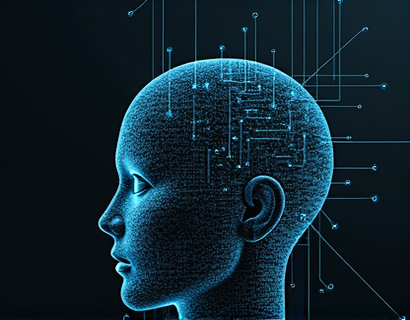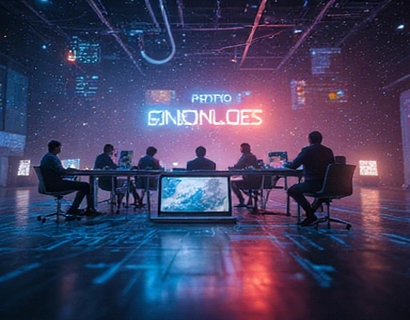AI-Powered Cosmic Learning: Interactive Exploration with Customizable Settings for Educators and Space Enthusiasts
In the realm of education and space exploration, the integration of artificial intelligence (AI) has opened new avenues for interactive and personalized learning experiences. This article delves into the concept of an AI-powered learning tool designed to make space and astronomy accessible, engaging, and customizable for both educators and space enthusiasts. By leveraging advanced AI technologies, this tool offers a unique platform for exploring the vast and intricate universe, tailored to individual interests and learning styles.
The core functionality of this AI-powered learning tool revolves around interactive explorations of celestial phenomena and astronomical concepts. Users can embark on a personalized cosmic journey, guided by an intelligent system that adapts to their knowledge level, preferences, and learning pace. This adaptive learning environment ensures that whether a user is a beginner or an advanced space enthusiast, they receive content that is both challenging and informative.
Customizable Learning Settings
One of the standout features of this AI-powered tool is its customizable settings. Users can adjust various parameters to tailor their learning experience. These settings include the depth of information, the type of content, and the pace of the exploration. For instance, a user can choose to focus on specific areas of astronomy, such as planetary science, astrophysics, or space exploration history. This flexibility allows educators to create lesson plans that align with their curriculum, while space enthusiasts can delve into topics that spark their curiosity.
Moreover, the tool offers different modes of interaction, such as text-based information, interactive simulations, and multimedia presentations. Users can select their preferred format based on their learning style, ensuring a more effective and enjoyable educational experience. For educators, this means they can integrate the tool into their teaching methods seamlessly, providing a rich and varied resource for their students.
Interactive Explorations
Interactive explorations are at the heart of this AI-powered learning tool. Users can engage with 3D models of celestial bodies, navigate through virtual space missions, and participate in real-time simulations of astronomical events. These interactive elements not only make learning more engaging but also help in visualizing complex concepts that are difficult to grasp through traditional methods.
For example, users can simulate a journey to Mars, making decisions at critical points such as launch, orbit insertion, and landing. The AI system provides feedback on the consequences of these decisions, offering insights into the challenges and considerations of actual space missions. This hands-on approach fosters a deeper understanding of the subject matter and encourages critical thinking and problem-solving skills.
Personalized Learning Paths
The AI algorithm behind this tool creates personalized learning paths for each user. By analyzing user interactions and performance, the system identifies areas of strength and weakness, adjusting the content accordingly. This personalized approach ensures that users are continually challenged and engaged, preventing boredom and fostering a deeper comprehension of the material.
For educators, this feature is particularly valuable as it allows them to track the progress of their students and identify areas where additional instruction may be needed. The tool can generate detailed reports and recommendations, helping educators to tailor their teaching strategies and provide targeted support to students.
Enhanced Accessibility
Accessibility is a key consideration in the design of this AI-powered learning tool. The platform is optimized for use on various devices, including desktops, tablets, and smartphones, ensuring that users can access the content anytime and anywhere. Additionally, the tool incorporates features such as text-to-speech, adjustable font sizes, and high-contrast modes to accommodate users with different needs and preferences.
For educators, this means they can easily integrate the tool into their classrooms, whether through a school's computer lab or by having students access it from home. The tool's accessibility features ensure that all students, regardless of their abilities, can participate fully in the learning experience.
Rich Multimedia Content
To enhance the learning experience, the tool incorporates a wide range of multimedia content. High-quality images, videos, and animations bring the universe to life, providing visual representations of abstract concepts. These multimedia elements are carefully curated to complement the text-based information, creating a comprehensive and immersive learning environment.
For instance, users can watch a video explaining the life cycle of a star, complete with visual aids that illustrate each stage of the process. Interactive quizzes and games further reinforce the learning, making the experience both educational and entertaining. This multimedia approach caters to different learning styles, ensuring that users can absorb information in the way that best suits them.
Real-Time Data and Updates
One of the unique aspects of this AI-powered learning tool is its ability to integrate real-time data and updates. The system continuously updates its database with the latest discoveries and research in the field of astronomy, ensuring that users always have access to the most current information. This feature is particularly beneficial for educators who want to provide their students with up-to-date knowledge and inspire them with recent breakthroughs in space exploration.
Users can also receive notifications about significant astronomical events, such as planetary alignments, meteor showers, or the launch of new space missions. These alerts encourage users to engage with the tool regularly, fostering a continuous learning mindset and a deeper connection to the ever-evolving field of space science.
Collaborative Learning Features
Collaboration is a crucial component of effective learning, and this AI-powered tool supports collaborative features to enhance the educational experience. Users can join virtual study groups, participate in discussions, and work on group projects within the platform. The AI system facilitates these interactions, providing tools for communication and collaboration that mirror real-world learning environments.
For educators, this feature is invaluable as it promotes teamwork and peer learning among students. The platform can also be used for remote learning, allowing students from different locations to collaborate and learn together, breaking down geographical barriers and fostering a global community of space enthusiasts.
Educational Resources and Curriculum Integration
The tool offers a comprehensive library of educational resources, including lesson plans, activity guides, and reference materials. These resources are designed to align with educational standards and curricula, making it easy for educators to integrate the tool into their existing teaching frameworks. The content covers a wide range of topics, from basic astronomy to advanced theoretical concepts, ensuring that there is something for every level of learner.
For educators, the availability of these resources saves time and effort in lesson planning, while providing a rich and varied curriculum. The tool's adaptability allows educators to customize the resources to fit their specific teaching goals and objectives, ensuring that the learning experience is both relevant and engaging.
User Feedback and Continuous Improvement
The AI-powered learning tool is designed with a feedback loop that continuously improves the user experience. Users can provide feedback on the content, interactivity, and overall usability of the platform. This feedback is analyzed by the AI system, which uses it to refine and enhance the tool over time. This iterative process ensures that the tool remains relevant and effective, addressing the evolving needs of educators and space enthusiasts.
For educators, this means they can trust that the tool is constantly being improved based on user input, providing a reliable and high-quality resource for their students. The feedback mechanism also allows educators to contribute to the development of the tool, sharing their insights and experiences to help shape future updates.
Conclusion
In conclusion, an AI-powered learning tool that offers interactive explorations and customizable settings represents a significant advancement in space education and astronomy. By providing a personalized, engaging, and accessible learning experience, this tool empowers both educators and space enthusiasts to explore the universe in new and exciting ways. Whether used in a classroom setting or for personal enrichment, this tool has the potential to inspire a new generation of space explorers and scientists, fostering a deeper understanding and appreciation of the cosmos.










































